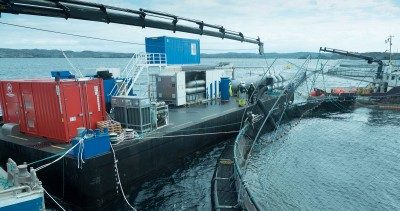Most-used non-chemical method to remove lice may be phased out.
The Norwegian Food Safety Authority has warned this week that it may be phasing out thermal delousing over two years, the Norwegian Animal Protection Alliance wrote in a press release.
“This is too passive. It is high time that the suffering of the fish is taken seriously,” said Animal Protection Alliance zoologist Susanna Lybæk.
Thermal delousing is a method that uses hot water to remove lice from fish in Norwegian fish farming. The use of thermal treatment has increased greatly in recent years and has become the most widely used drug-free lice treatment in Norwegian fish farming.
Several experts on fish health and welfare have questioned in recent years whether the method violates the Animal Welfare Act.
This week, the Norwegian Food Safety Authority has warned that thermal delousing may be prohibited, unless “new knowledge proves that it can be used in a well-mannered manner”. The phase-out period is set at two years. Zoologist and scientific advisor in the Animal Protection Alliance, Susanna Lybæk, thinks this is the right time.
“We have known for several years that thermal delousing causes panic behaviour and increased salmon mortality, and that treatment is likely to be painful. Two years is too long for the salmon to wait. Such torture chambers for salmon should never have been allowed in the first place,” she added.
A study conducted by the Norwegian Veterinary Institute and the Institute of Marine Research on behalf of the Norwegian Food Safety Authority confirms that the method is painful for the salmon. Desalination with hot water above 28 degrees gives clear pain behaviour in the form of the fish swimming in panic into the vessel wall, shaking their heads and splashing on the surface.

The recommended treatment temperature is 28-34 degrees, which causes pain and panic in the salmon. The Fish Health Report 2018 reveals that some use temperatures up to 36.1 degrees. This points out the Food Safety Authority is in violation of the Animal Welfare Act.
“We are pleased that the Food Safety Authority is clear that one must not exceed the maximum temperature of 34 degrees,” she said.
“In addition, doubts have been raised as to whether the water in the treatment chamber actually maintains the desired temperature when quickly treating a large number of fish. Questions are being asked as to whether the temperature can be a degree higher or lower than one thinks,” the press release wrote.
“Here, the researchers have uncovered two major challenges for the salmon. Not only is the most common non-drug method painful, but the system in place to safeguard against it has grossly failed. This is suffering put into the system,” said Lybæk.


